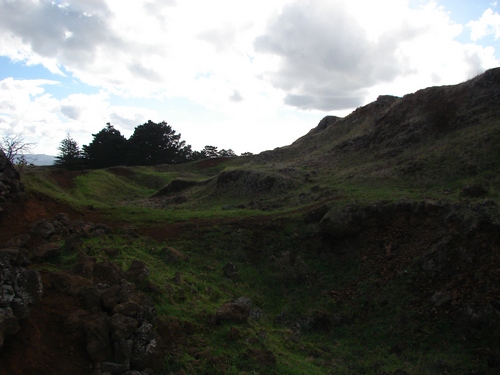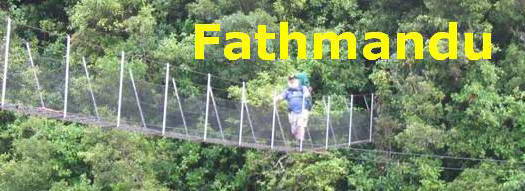If you haven't already a little elementary vulcanology in your CV, then I suggest a quick visit to this page where I have gathered some basic information. Otherwise this walk is basically a wander around a bumpy paddock.
(This is a work in progress as I assemble information about the local volcanic fields.)
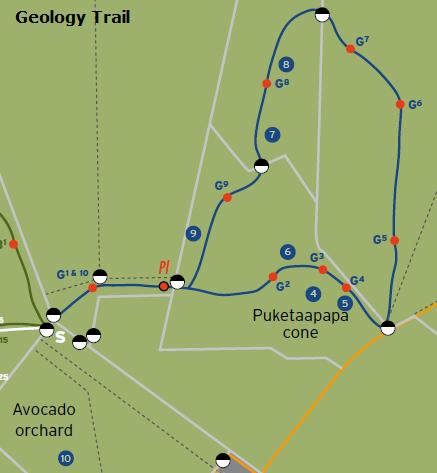
The map is from the Manukau City Council Brochure.
As with the other trails, it's through the main gate and down to the S at the second gate. The geology trail heads around to the right.
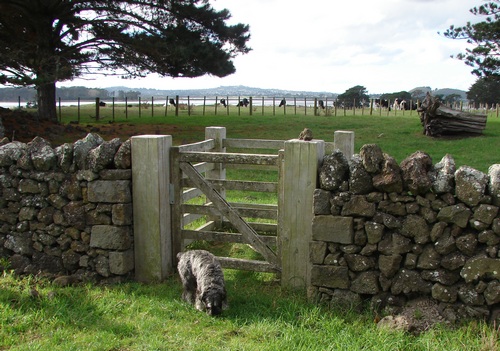
Over to the right of the trees is Puketaapapa aka Pukeiti.
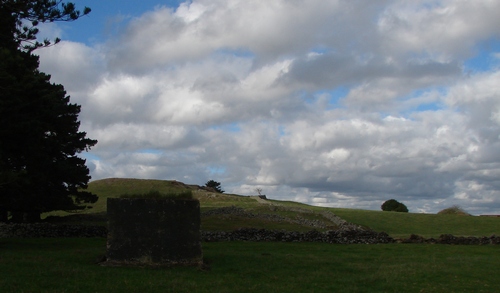
To the left is a field of cows, and the gate is open. Alice gets in behind again.
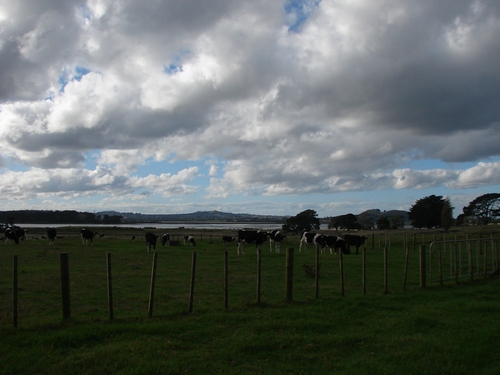
We walk up the fenceline to the first Gpost. The poplar and the stone wall remind us strongly of the historical pakeha presence. Apart from the clear air we could be anywhere in England, almost...
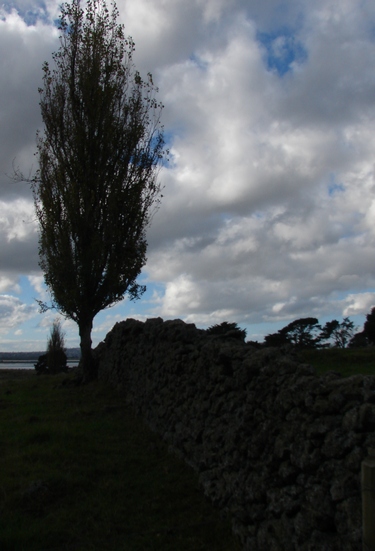
G1 points us to a blue stone halfway up the hill.
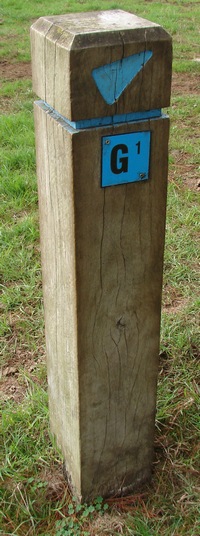
and away we go.
Up above us, huge horses gallop across the sky
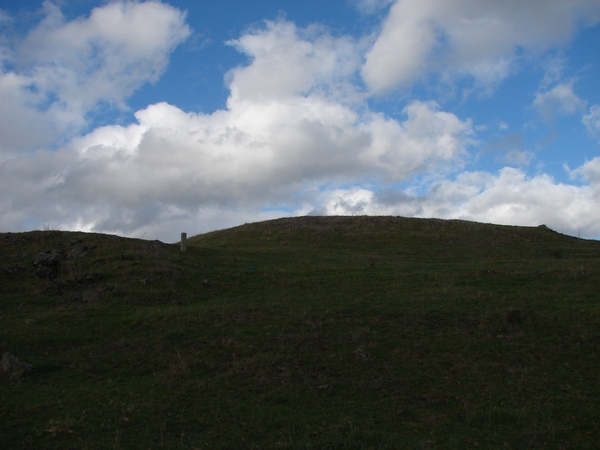
In fact after several visits I am starting to realise just how large a part the sky plays in the landscape around here.
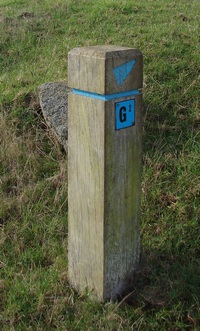
Over to our left is Puketutu Island, and another dramatic section of sky.
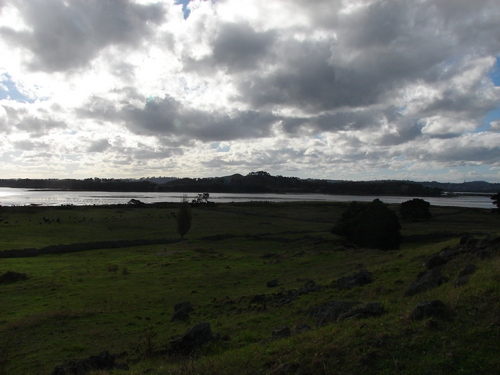
Another blue stone and another post up ahead
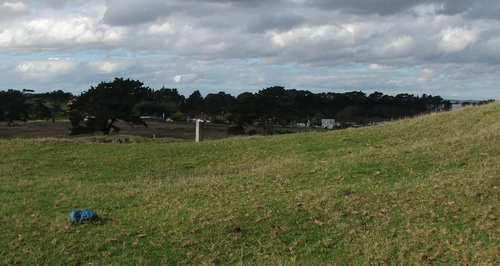
G3 and we're veering to the right around the north of the volcano.
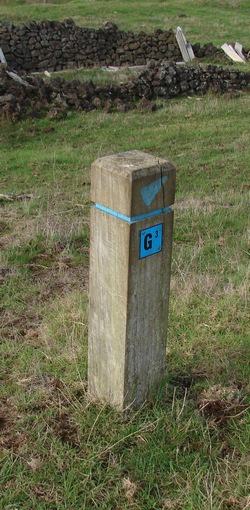
Out ahead of us you can see the ridges and valleys of the north flowing lava from Pukeiti. There is also a whopper of a macrocarpa stump.
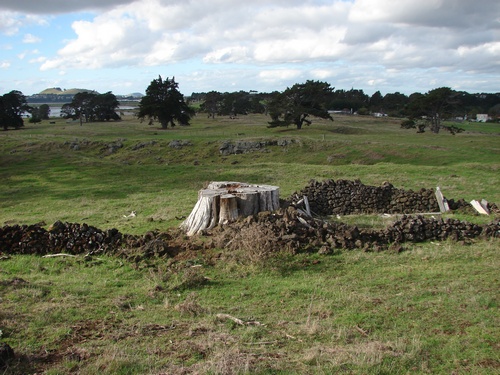
These iconic trees are a constant element in Murray Ball's classic Footrot Flats cartoons, and a strong element here in the Stonefields.
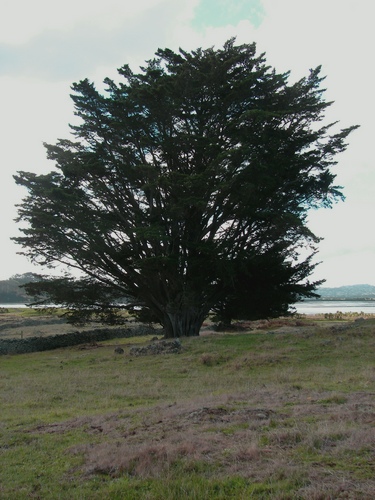
We head along beside the wall.
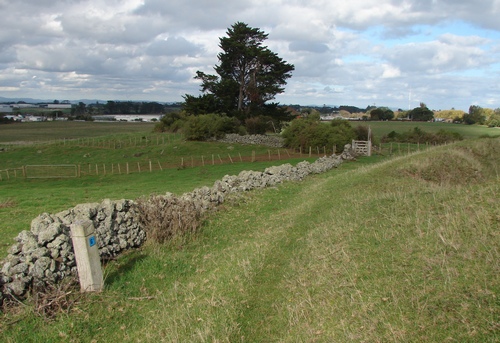
Up to our right rises Pukeiti. We are immediately below it. Between us and the summit, almost completely encircling it, is a moat of sorts. I notice that someone is taking the trouble to spray gorse. There are more dangerous weeds around than the gorse.
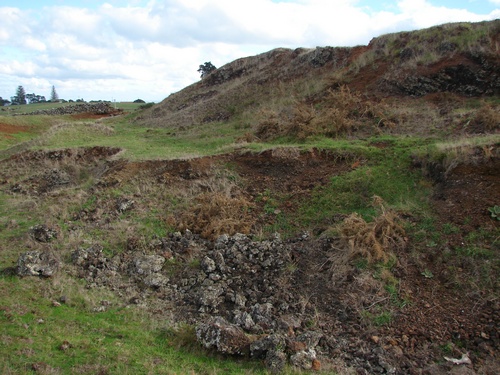
We are asked in the Manukau CC brochure to keep clear of the summit. It is a "limited access" area, of special significance to local Maori. It is part of their whakapapa, their identity, their wider sense of self.
For me, the moat was the boundary and there was no need for any notice. It is a powerful place. There are many areas I have tramped where the sense of an abiding presence is strong, and my usual practice is to pause, to give and receive a blessing, and then move on. Here, the message is quiet, but unequivocal: No intrusion, please.
However, if it is important to the local people, then that information needs to be much more explicit and available to the casual visitor who will not be expecting or looking for such intangible indications.
As a friend of mine remarked, it is perhaps a cultural imperative for pakeha that if we see a mountain we want to knock the bastard off.
One of our last photos, for example, as we climbed into the van on the way out was this one:
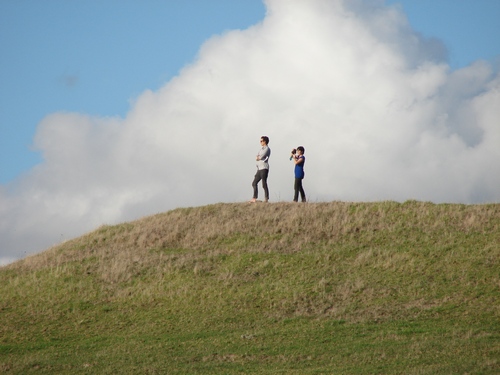
Some time after this I came across the record of a Tiriti O Waitangi Committee Meeting of the Manukau City Council, dated 8 June 2008, in which the following appeared:
2.7.1 Together with Makaurau Marae, and the other partners and stakeholders of the
Otuataua Stonefields Historic Reserve, Manukau City Council is exploring a proposal
to restore the Puketapapa (Pukeiti) volcanic cone that is located on the Reserve near
the main entrance gates. This maunga is known to be highly significant to Te Wai o
Hua Iwi, especially the residents of the nearby Ihumatao papakainga. The proposal
meets a management plan (2003) objective to reinstate the cone. The plan is simply
to infill a small (c. 6000 cu metre) historic cone and local body scoria quarry with
appropriate clean-fill to restore the original landform using historic photographs as a
guide. This initiative is in the early stages of planning but support for the project has
been positive from both agencies and Iwi. A restoration plan is being produced to
support all the necessary approvals for works to proceed.
I confess I have a slightly queasy stomach reaction to this one, as I might, perhaps, react to a proposal to fit plaster of Paris arms to the Venus de Milo. Appropriate clean fill? Hmmmm.
I wonder at the bones in the moat a little further round. There are no signs of a fire or such, but that's definitely not a complete skeleton.
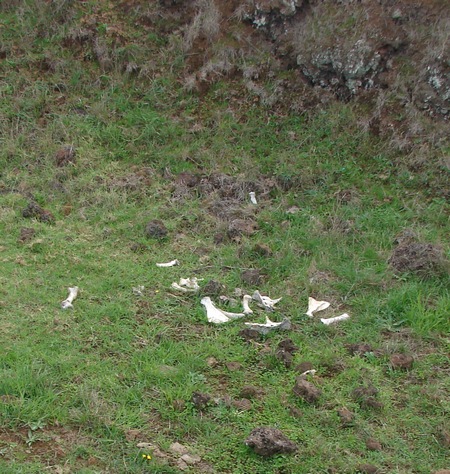
Bones apart, there appears, on the whole, to be good compliance with the request not to bring food onto the site, if the absence of rubbish is any indication.
